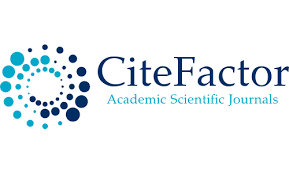Types Of Realities Found In Elementary School Textbooks And Teaching Methods
Keywords:
Elementary school, textbook, abilityAbstract
The importance of realities in education, their role in improving educational quality, and their ability to connect students' knowledge with real life are discussed. It highlights how realities help students understand cultural heritage and national values, as well as develop critical and creative thinking skills. The types of realities in elementary school textbooks are analyzed, including cultural and national realities, natural and geographical realities, historical and folklore realities, and linguistic realities. Methods of teaching realities are explored, such as interactive methods (discussions, role-playing games, group activities), practical activities (preparing national dishes, handicrafts), text analysis, and written assignments (essay writing, storytelling), as well as using pictures and videos for explanation. The impact of realities on students is also examined, including the development of cultural awareness, adaptation to social life, the formation of ecological and economic thinking, and guidance in career choice.
References
Husanbayeva Q. (2020). Methods of Teaching Literature in Elementary Grades. Tashkent: “InnovatsiyaZiyo” Publishing House.
Axmedova Shahnoza. (2024). Organization and Teaching Methods of Fairy Tale Lessons in Elementary
Grades. Tadqiqotlar.uz, 39(3), 127–131.
Qodirova Xolidaxon Ulug‘bek qizi, Azamjonova Gulshoda Shavkatjon qizi. (2024). Developing Teaching
Methods for Elementary School Students. Best Intellectual Researches, 12(4), 134–135.
Meretgeldieva Aygul. (2023). Teaching Methods in Elementary Grades. Eurasian Journal of Law, Finance,
and Applied Sciences, 3(7), 40–42.
Downloads
Published
Issue
Section
License

This work is licensed under a Creative Commons Attribution-NonCommercial 4.0 International License.
User Rights
Under the Creative Commons Attribution-NonCommercial 4.0 International (CC-BY-NC), the author (s) and users are free to share (copy, distribute and transmit the contribution).
Rights of Authors
Authors retain the following rights:
1. Copyright and other proprietary rights relating to the article, such as patent rights,
2. the right to use the substance of the article in future works, including lectures and books,
3. the right to reproduce the article for own purposes, provided the copies are not offered for sale,
4. the right to self-archive the article.












